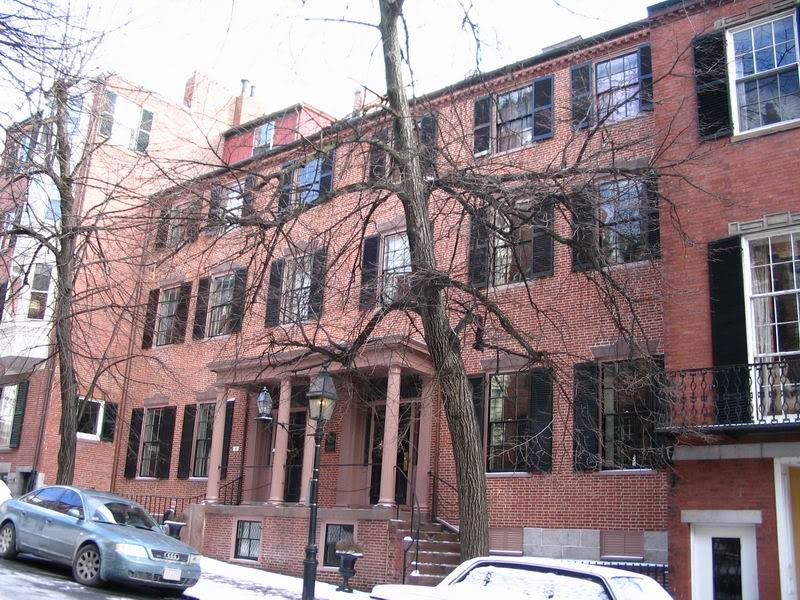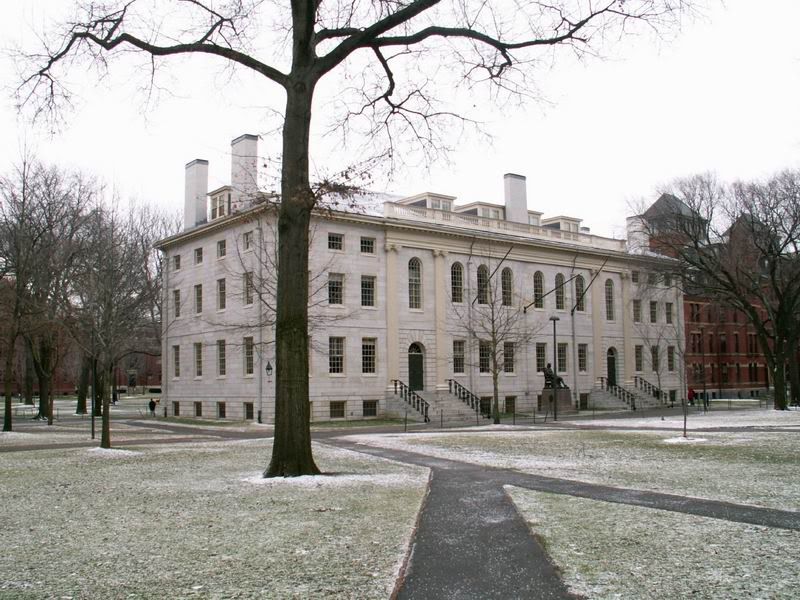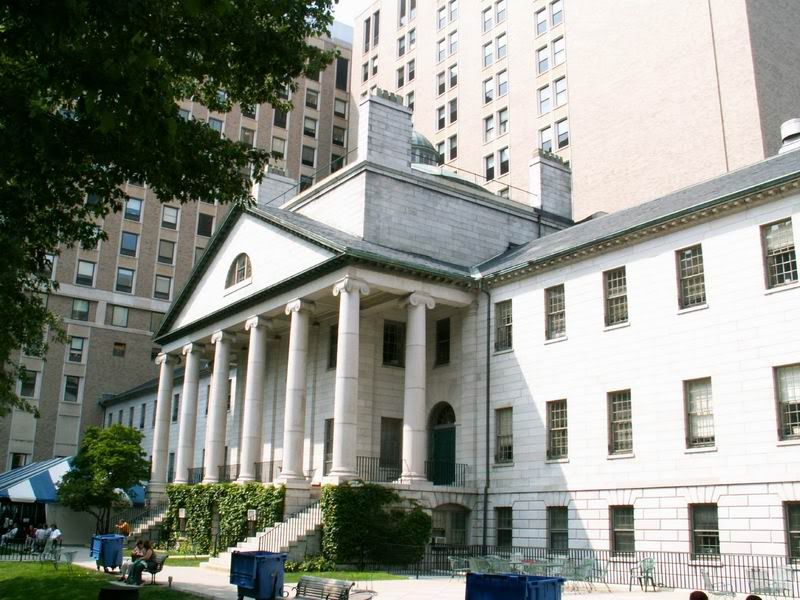Joe_Schmoe
Active Member
- Joined
- May 25, 2006
- Messages
- 374
- Reaction score
- 0
Charles Bulfinch was the first professional architect in the United States, and undoubtedly the most influential architect in New England. Even today, more buildings being constructed in New England are Bulfinch-derived than from any other source. Bulfinch was not only chief architect of Boston, he was an urban planner, chief of police, and head of the Board of Selectmen. He designed hospitals, churches theatres, prisons, schools, mansions, warehouses, banks, the state capitols for three states, the national capitol, and laid out entire streets and neighborhoods.
Bulfinch is one of the three architects who, to me, define the character of Boston. Gridley Fox Bryant is another, and the third I am saving for a future installment (it's not Richardson). Bulfinch transformed Boston from a town of ramshackle wooden structures to an elegant city of brick. This seems like a good place to give my spiel about red brick. Time for a confession: I love red brick. Love it. I love brick federal mansions, love the old brick factories that are spread around New England, love brick libraries and town halls, love brick sidewalks, love the brick-lined streets of the north end. Brick works beautifully in New England with its seasons. Nothing is greyer than Boston in, say February or March, but the red buildings of the North End, South End, or Beacon Hill provide much needed color and warmth. The South Boston waterfront with its cream and grey buildings is going to be almost uninhabitably grim in the winter months, just as is the Christian Science center with its vast expanse of concrete. This makes it all the more infuriating that there are so many badly done red-brick buildings around. As Bulfinch was undoubtedly aware, brick works best as a background on which other architectural elements are applied, and when brick is brought into the foreground it can become horribly repetitive and dull. Thus, red brick does not lend itself to modernism as modernism loves to emphasize the material rather than its adornment. Modernism's favorite virtues are the "dramatic" and "presence." Too many modern architects have thought that the way to achieve drama is to make things vast, as in vast expanses of glass or concrete. If vastness is what causes a building to have dramatic presence, it is thought, vast expanses of brick can be dramatic as well. However, there is nothing dramatic about a vast expanse of brick, as our beloved city hall plaza shows.
I highly recommend The Architecture of Charles Bulfinch by Harold Kirker to anyone interested in his works. It contains many illustrations and photographs of lost Bulfinch buildings that are not available online.
Tontine Crescent, Franklin St.:



One of those cool bits of Boston lore is that Arch Street got its name because it passed through the arch in the middle of Bulfinch?s Tontine Crescent. Unfortunately, funding the construction of the Tontine Crescent backrupted Bulfinch and caused him to spend time in debtor?s prison.
17 ? 24 Franklin Place:

State House:

1st Harrison Gray Otis House:


Beacon Hill mansions:






Second Harrison Gray Otis House:

If I could live any place in Boston, this would be it. One of the only free-standing houses in Boston, in the middle of Beacon Hill, designed by Bulfinch. I believe the founder of Cablevision lives here now.
Cathedral of the Holy Cross:


Bulfinch designed 5 churches in Boston, unfortunately, only one survives. This was his second.
St. Stephen?s Church:

This is the only surviving of Bulfinch?s churches in Boston.
Amory-Tiknor House:

You can still make out the federal mansion underneath all of the unnecessary additions.
India Wharf:


One of the saddest losses in Boston?s sad history of destroying itself is the loss of India Wharf which managed to hold on all the way until 1963 when it was demolished for a parking lot and then, ugh, Harbor Towers.
Bulfinch?s own residence managed to survive in Bowdoin Sq until 1961 when it was tragically demolished.
Stoughton Hall, Harvard:

Third Harrison Gray Otis House:

Faneuil Hall:

Broad Street:


Broad St used to consist of Bulfinch designed warehouses from end to end. Luckily several of them still survive.
Boylston Market:

Boylston Market was intended to be a Faneuil Hall for the South End. It was constructed on the site of what is now the China Trade Center. Interestingly, the cupola survived its demolition and now sits upon a church on Mass Ave in Arlington.
Federal Street Church:

Colonade Row, Tremont Street:


One of the worst decisions ever made in Boston was allowing the destruction of Colonnade Row, which would have framed the Common spectacularly when paired with Park Row.
Old Old Boston City Hall:

Around this time, Bulfinch stopped using brick and began using marble, paving the way for Gridley Fox Bryant and Boston Granite style.
University Hall, Harvard:

New South Church:

Bulfinch's finest church.
Mass General Hospital:

Bulfinch is one of the three architects who, to me, define the character of Boston. Gridley Fox Bryant is another, and the third I am saving for a future installment (it's not Richardson). Bulfinch transformed Boston from a town of ramshackle wooden structures to an elegant city of brick. This seems like a good place to give my spiel about red brick. Time for a confession: I love red brick. Love it. I love brick federal mansions, love the old brick factories that are spread around New England, love brick libraries and town halls, love brick sidewalks, love the brick-lined streets of the north end. Brick works beautifully in New England with its seasons. Nothing is greyer than Boston in, say February or March, but the red buildings of the North End, South End, or Beacon Hill provide much needed color and warmth. The South Boston waterfront with its cream and grey buildings is going to be almost uninhabitably grim in the winter months, just as is the Christian Science center with its vast expanse of concrete. This makes it all the more infuriating that there are so many badly done red-brick buildings around. As Bulfinch was undoubtedly aware, brick works best as a background on which other architectural elements are applied, and when brick is brought into the foreground it can become horribly repetitive and dull. Thus, red brick does not lend itself to modernism as modernism loves to emphasize the material rather than its adornment. Modernism's favorite virtues are the "dramatic" and "presence." Too many modern architects have thought that the way to achieve drama is to make things vast, as in vast expanses of glass or concrete. If vastness is what causes a building to have dramatic presence, it is thought, vast expanses of brick can be dramatic as well. However, there is nothing dramatic about a vast expanse of brick, as our beloved city hall plaza shows.
I highly recommend The Architecture of Charles Bulfinch by Harold Kirker to anyone interested in his works. It contains many illustrations and photographs of lost Bulfinch buildings that are not available online.
Tontine Crescent, Franklin St.:



One of those cool bits of Boston lore is that Arch Street got its name because it passed through the arch in the middle of Bulfinch?s Tontine Crescent. Unfortunately, funding the construction of the Tontine Crescent backrupted Bulfinch and caused him to spend time in debtor?s prison.
17 ? 24 Franklin Place:

State House:

1st Harrison Gray Otis House:


Beacon Hill mansions:






Second Harrison Gray Otis House:

If I could live any place in Boston, this would be it. One of the only free-standing houses in Boston, in the middle of Beacon Hill, designed by Bulfinch. I believe the founder of Cablevision lives here now.
Cathedral of the Holy Cross:


Bulfinch designed 5 churches in Boston, unfortunately, only one survives. This was his second.
St. Stephen?s Church:

This is the only surviving of Bulfinch?s churches in Boston.
Amory-Tiknor House:

You can still make out the federal mansion underneath all of the unnecessary additions.
India Wharf:


One of the saddest losses in Boston?s sad history of destroying itself is the loss of India Wharf which managed to hold on all the way until 1963 when it was demolished for a parking lot and then, ugh, Harbor Towers.
Bulfinch?s own residence managed to survive in Bowdoin Sq until 1961 when it was tragically demolished.
Stoughton Hall, Harvard:

Third Harrison Gray Otis House:

Faneuil Hall:

Broad Street:


Broad St used to consist of Bulfinch designed warehouses from end to end. Luckily several of them still survive.
Boylston Market:

Boylston Market was intended to be a Faneuil Hall for the South End. It was constructed on the site of what is now the China Trade Center. Interestingly, the cupola survived its demolition and now sits upon a church on Mass Ave in Arlington.
Federal Street Church:

Colonade Row, Tremont Street:


One of the worst decisions ever made in Boston was allowing the destruction of Colonnade Row, which would have framed the Common spectacularly when paired with Park Row.
Old Old Boston City Hall:

Around this time, Bulfinch stopped using brick and began using marble, paving the way for Gridley Fox Bryant and Boston Granite style.
University Hall, Harvard:

New South Church:

Bulfinch's finest church.
Mass General Hospital:

